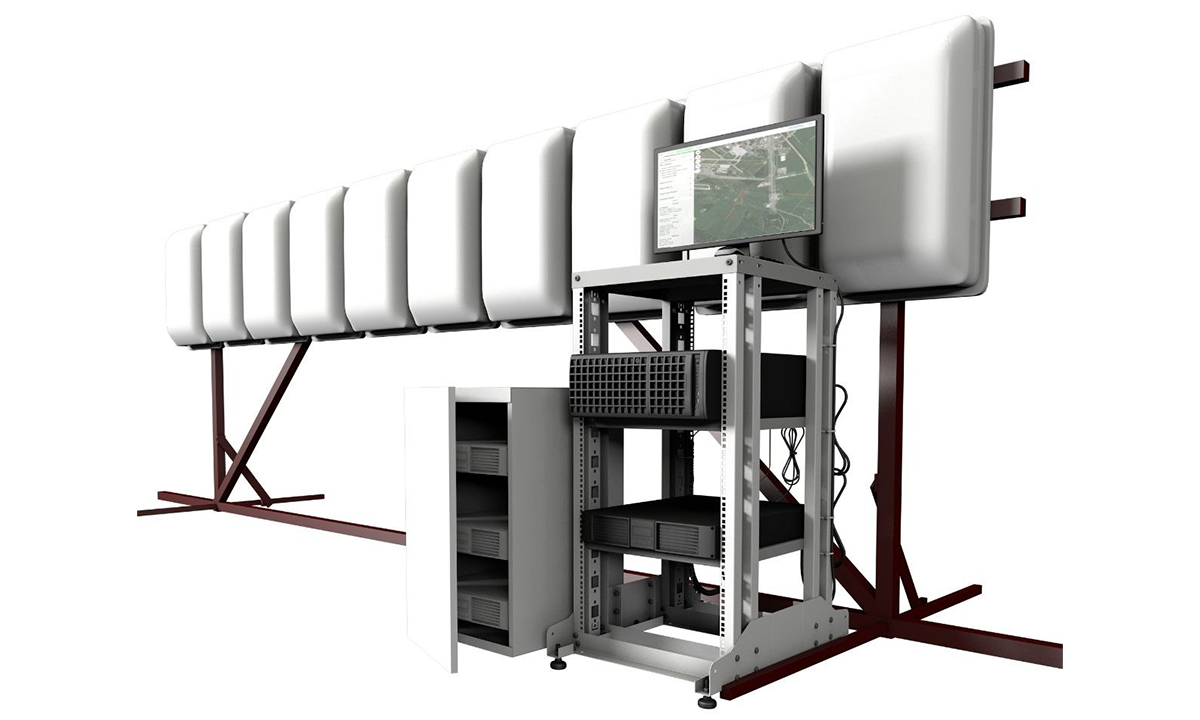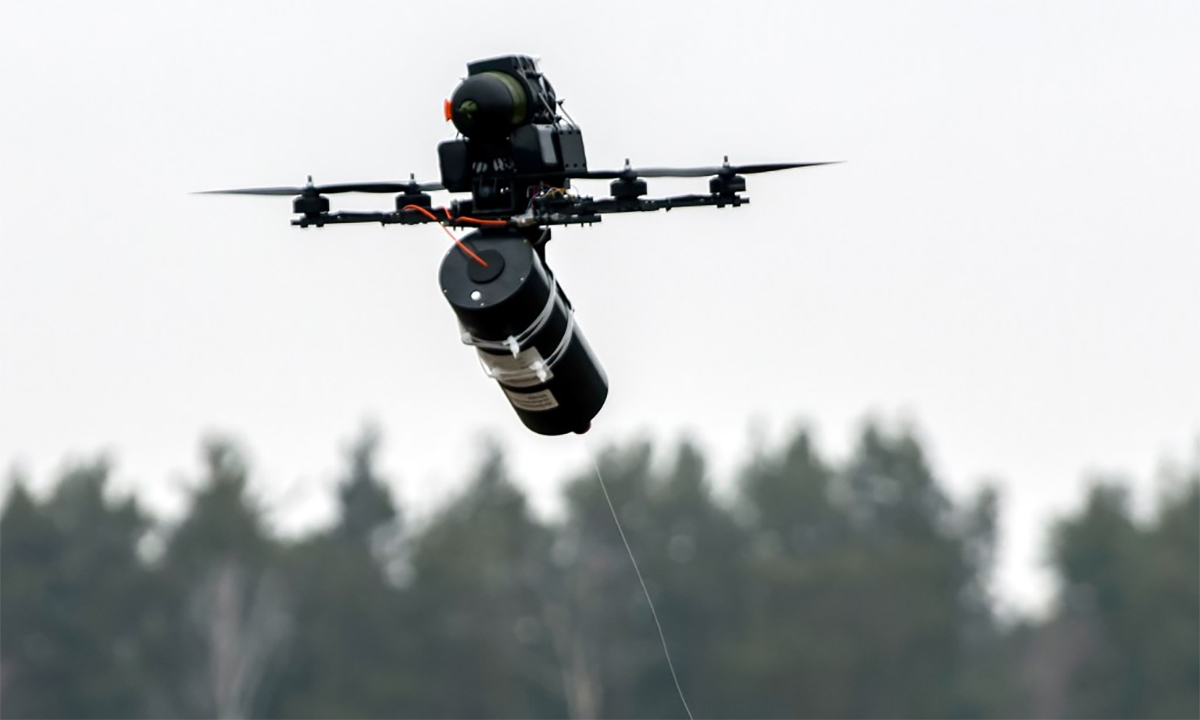Russia's state-owned defense conglomerate Rostec announced on 9/7 that its subsidiary Ruselectronics has developed a 3D passive coherent location (3D PCL) system. This system can reportedly detect small airborne objects, including fiber-optic drones, at a range of tens of kilometers.
The 3D PCL operates passively, meaning it doesn't emit its own signals. Instead, it creates a 3D map and detects targets by analyzing reflections of existing signals from external sources like radio and television broadcasts. This method allows the radar system to detect even fiber-optic drones, which do not emit electronic signals.
 |
A graphic representation of Russia's 3D PCL radar system. Graphic: Rostec |
A graphic representation of Russia's 3D PCL radar system. Graphic: Rostec
According to Rostec, this passive operation makes the system difficult to detect using enemy electronic warfare measures.
Natalia Kotlyar, deputy director for business development at the Vector Research Institute, a part of Ruselectronics, stated that the new device can operate in complex electronic environments. It can also distinguish between multiple reflections caused by concrete structures in urban settings.
"Unlike optical and infrared systems, the 3D PCL can operate effectively day and night, and in all weather conditions," she said.
Rostec claims that the 3D PCL system uses significantly less power than active radar and optical sensors. It can be integrated into existing defense systems, potentially reducing overall operating costs.
Drones have become increasingly prevalent on the modern battlefield due to their low cost and high impact. Fiber-optic drones are equipped with a spool of thin fiber-optic cable, allowing operators to control them through a wired connection instead of traditional radio signals.
These drones are seeing increased use in the conflict in Ukraine, due to their complete immunity to electronic warfare. Their ability to transmit high-quality, stable video feeds allows operators to control munitions with greater ease and precision.
 |
A Ukrainian fiber-optic drone. Image: War Zone |
A Ukrainian fiber-optic drone. Image: War Zone
Although both Russian and Ukrainian forces use fiber-optic drones, Moscow is believed to be the first to widely deploy them on the front lines, starting in mid-2024.
To counter drones, forces have employed various tactics: using shotguns loaded with birdshot to down the devices, deploying nets along key routes targeted by these weapons, and even resorting to cutting the drones' fiber-optic cables with scissors.
Nguyen Tien (According to RIA Novosti, TASS)












